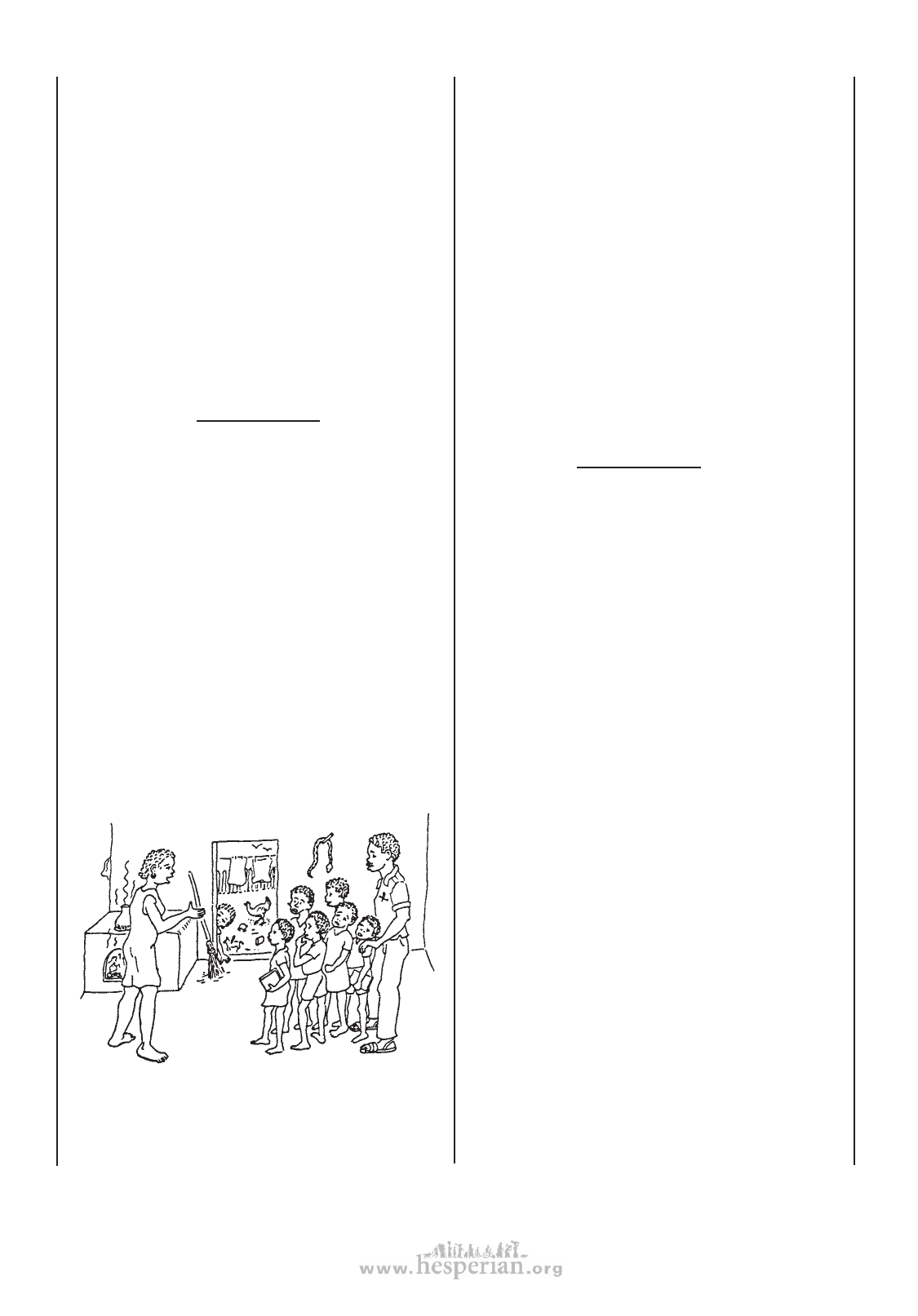
438 chapter 47
Then one little boy remembered, “There’s a girl who
lives in a house at the far end of the village. She crawls
around on her hands and knees, and spends a lot of
time just sitting outside. She always looks sad. I don’t
know her name, but she looks old enough to be in
school!”
“Let’s invite her to come to school with us,” said
one of the children.
“But how,” asked another, “if she can’t walk?”
“We could bring her in a push cart!”
“No! The path from her home is too steep and
rocky.”
“Then we’ll carry her! If we all help, it will be easy.’’
“Let’s go to her house this afternoon” “Good idea!”
•
That afternoon after school, 6 of the school
children, together with their teacher, visited Julia’s
home. Julia, who was out back, was too shy to come
in. So they started talking with her mother.
“We want to be her friends,” they said. “And to help
her go to school.”
“But she can’t go to school.” her mother said with
surprise. “She can’t even walk!”
“We can carry her,” offered the children. “We’ll
come for her every day and bring her back in the
afternoons. It’s not far, really!”
“The whole class is ready to help out,” said the
teacher. “And so am I.”
“But you don’t understand,” said her mother.
“Julia’s not like other children. They’ll tease her. She is
so shy she doesn’t open her mouth around strangers.
And besides, I don’t see how school could help her”
The teacher tried his best to explain to the mother
the great importance of school for a child like Julia.
The children promised that they would all be friendly
and help her in any way they could. But her mother
just shook her head.
“Do you think Julia would like to go to school?”
asked the teacher.
Her mother gave a tired sigh. Then she turned to
Julia, who was hiding outside the door but peeping
in at the visitors. “Julia, darling, do you want to go to
school?”
Julia’s eyes opened wide with fear. She shook her
head in a terrified NO and disappeared behind the
doorway.
“There, you see!” said Julia’s mother. “For Julia,
school just wouldn’t make sense... Now I have a lot
of work to do, please excuse me. But thank you for
thinking of my poor little girl.”
“Please give it more thought,” said the teacher as he
and the children went out the door. “And thank you for
your time.”
“Have a nice day,” said Julia’s mother, and went
back to work.
•
At school the next day the teacher met with the
whole class to discuss their visit to Julia’s home.
“This CHILD-to-child stuff sounds so easy and fun
when we pretend,” said one of the children. “But
when we try to use it in real life, it ain’t so easy.”
“Isn’t!” said the teacher.
“Still,” said one little girl who had visited Julia’s
home, “we have to keep trying. Did you see the
way Julia looked at us? She was so scared she was
shaking. But she was interested, too. I could tell. She
looked so... lonely!”
“But what can we do? I don’t think her mother wants
us to come back.’’
There was a long silence. Then one little boy
said, “I’ve got an idea! Let’s talk to Tomás. He’s
handicapped, too. But he’s in school and is doing fine.
Maybe he can help us.”
After school, several of the first and second year
students wailed for Tomás, who was in the fourth year.
They told him about Julia, and what happened when
they visited her home.
“How was it when you began school, Tomás?” asked
the children. “Were you afraid? Did your parents want
you to go? How did the other children treat you?”
Tomás laughed. “One question at a time!” He
spoke slowly, with a twisted mouth and a sort of jerky
speech that sometimes made him hard to understand.
“Help me sit down under that tree.” Tomás moved
forward on his crutches. The children helped him sit
down. (He explained that his hips and legs wanted
to stay straight when he wanted to bend them.) He
sat leaning against the tree, and began to answer the
children’s questions.
Disabled village Children